It’s that time of the year, when winter is easing and the harbinger of spring is evident. It is also the time, when after four years, the year 2024 has come with that one extra day in February, taking the calendar from 365 days in a year to 366 days.
This extra day is what we call ‘Leap Day’ – to keep the calendar year in sync with the astronomical & tropical year.
Fact 1: Tropical years don’t match our Calendar year
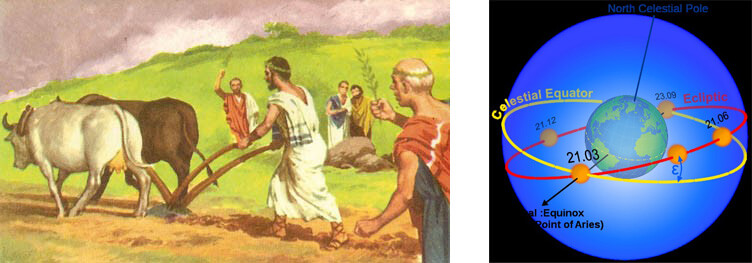
The tropical year has been used since time immemorial, to keep track of seasons, planting, and harvesting. It is the period of time required by the sun to pass from 1 vernal equinox to the next vernal equinox. It is equal to 365 days, 5 hours, 48 minutes, and 46 seconds, or 365.2422 days.
Now on to calendars.


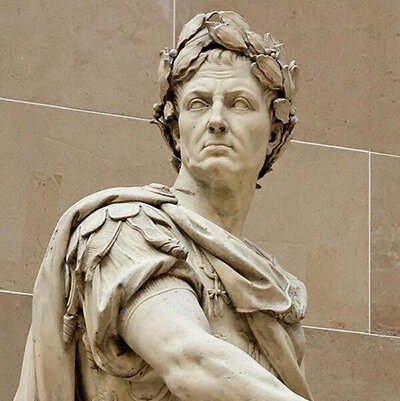
The calendar system prior to the current one, was actually instituted for use in the Roman Empire by Julius Caesar around 46 BC.
Called the Julian calendar, it was 0.0078 days (11 minutes and 14 seconds) longer than the tropical year. Naturally, errors in timekeeping gradually accumulated.

So, in 1582, Pope Gregory XIII reformed the calendar, because between 46 BC and 1582 AD, this accumulated error amounted to a total of:
= 0.0078 x (no. of yrs between 46 BC & 1582 AD)
= 0.0078 x (46+1582) or 0.0078 x 1628
= 12.7 days.
Oops! That was a problem!
We just saw how our calendar year is shorter than the tropical year by 0.2422 days. To correct this (approximately), Pope Gregory XIII added 1 day every four years. Thus, three calendar years are 365 days long; the fourth calendar year is 366 days long, with 1 extra day being added to February. The average length of the calendar year in days now becomes: (3 x 365 + 366)/4 = 365.25 days.
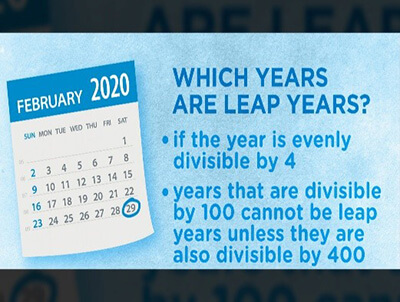
Gregory thus suggested that all years divisible by 4 were to be leap years except for century years. Not all years ending with 00 could be leap years. A century year must be divisible by 400 to be a leap year. So, 1700 or 1800 or 1900 were not leap years, but 2000 was. Any guess which next century year will be a leap year?
Fact 2: Why did February get the leap day?
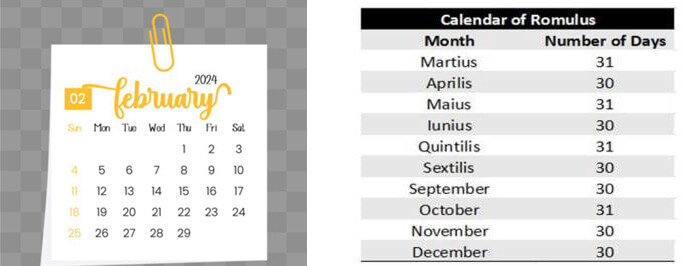
Going back in history, it was Romans who first designated February 29 as the leap day. The early Roman calendar (prior to Julius Caesar), had a glaring difference in structure from its later variants: it consisted of 10 months rather than 12, with 6 months of 30 days and 4 months of 31, for a total of 304 days.
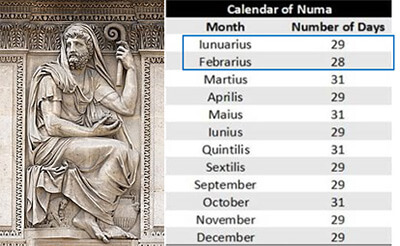
In order to fully sync the calendar with the lunar year, the Roman king Numa Pompilius added January and February to the original 10 months.
However, Numa wanted to avoid having even numbers in his calendar, as Roman superstition at the time held that even numbers were unlucky.
He subtracted a day from each of the 30-day months to make them 29. The lunar year consists of 354.367 to be exact, but calling it 354 would have made the whole year unlucky!), which meant that he now had 56 days left to work with.
In the end, at least 1 month out of the 12 needed to contain an even number of days. This is because of simple mathematical fact: the sum of any even amount (12 months) of odd numbers will always equal an even number—and he wanted the total to be odd. Numa chose February, a month that would be host to Roman rituals honouring the dead, as the unlucky month to consist of 28 days.
Despite changes in the calendar by Julius Cassar and Pope Gregory—February’s 28-day length has stuck.
Fact 3: Is it important to have a leap day?
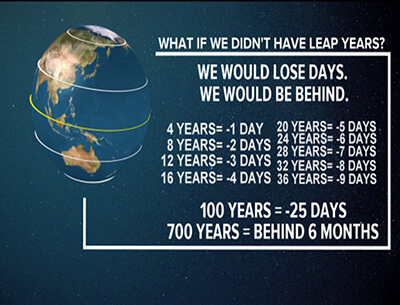
Subtracting 5 hours, 46 minutes and 48 seconds off of a year, every year, maybe doesn’t seem like a big deal. But, if you keep subtracting almost 6 hours every year for many years, things can really get messed up.
For example, say that July is a warm, summer month where we live, right? If we never had leap years, all those missing hours would add up into days, weeks and even months.
Eventually, in a few hundred years, July would actually take place in the cold winter months and then in the next cycle of a hundred years again switch back to summer!
Thanks to Pope Gregory, the Gregorian Calendar still in use today, settled the matter and ensured that the tropical year did not get out of step with the seasons over time.
Fact 4: Do other planets have leap years?
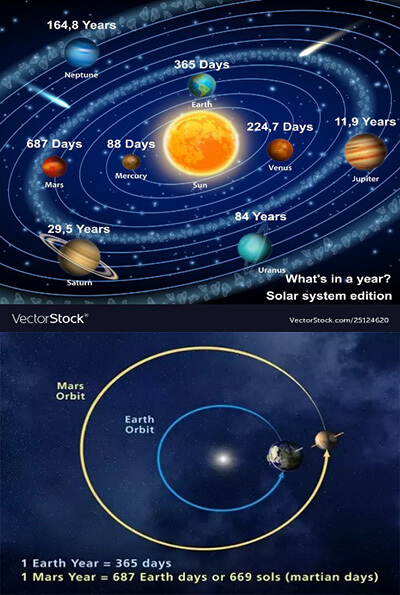
Yes! Leap years happen because a planet’s orbit around the Sun (year) and rotation on its axis (day) are not perfectly in sync. This is true of almost every other planet in our solar system, not just our Earth.
Mars, for example, has more leap years than regular years! A year on Mars is 668 sols, or Martian days. However, it takes exactly 668.6 sols for Mars to go around the Sun.
So, you would sometimes have to add a sol to help the calendar catch up. In a 10-year period, 4 of the years would have 668 sols and 6 of the years would be leap years with 669 sols.
Fact 5: What are people born on the 29th of February called?
And now for a fun fact around this trivia on Leap Days and Leap Years:

People born on the leap day, i.e. February 29, are often called ‘leaplings‘ or ‘leapers‘!
The fun thing is they get to celebrate their birthday on the correct day once in 4 years! ***


